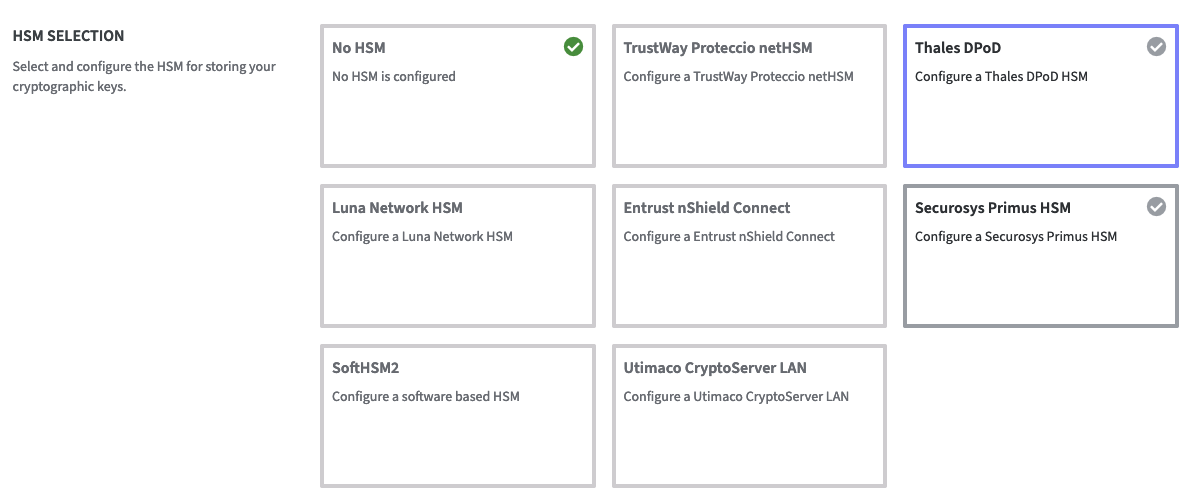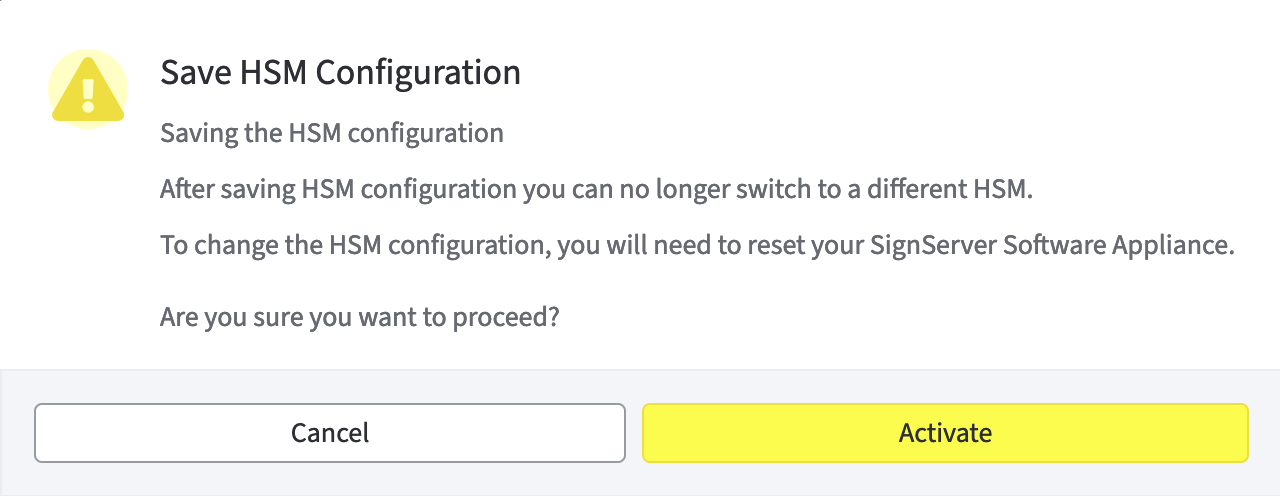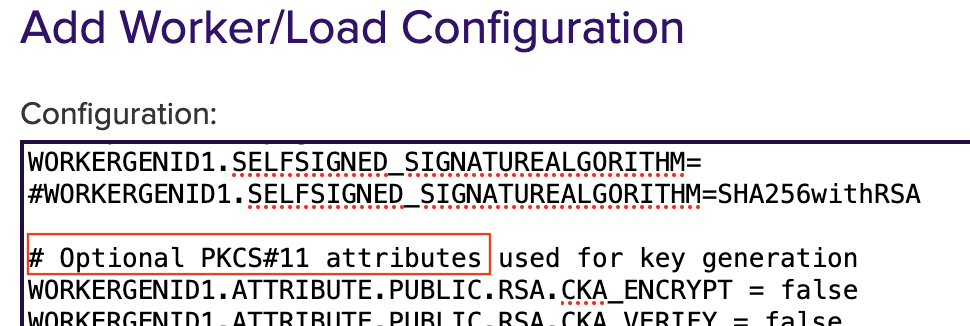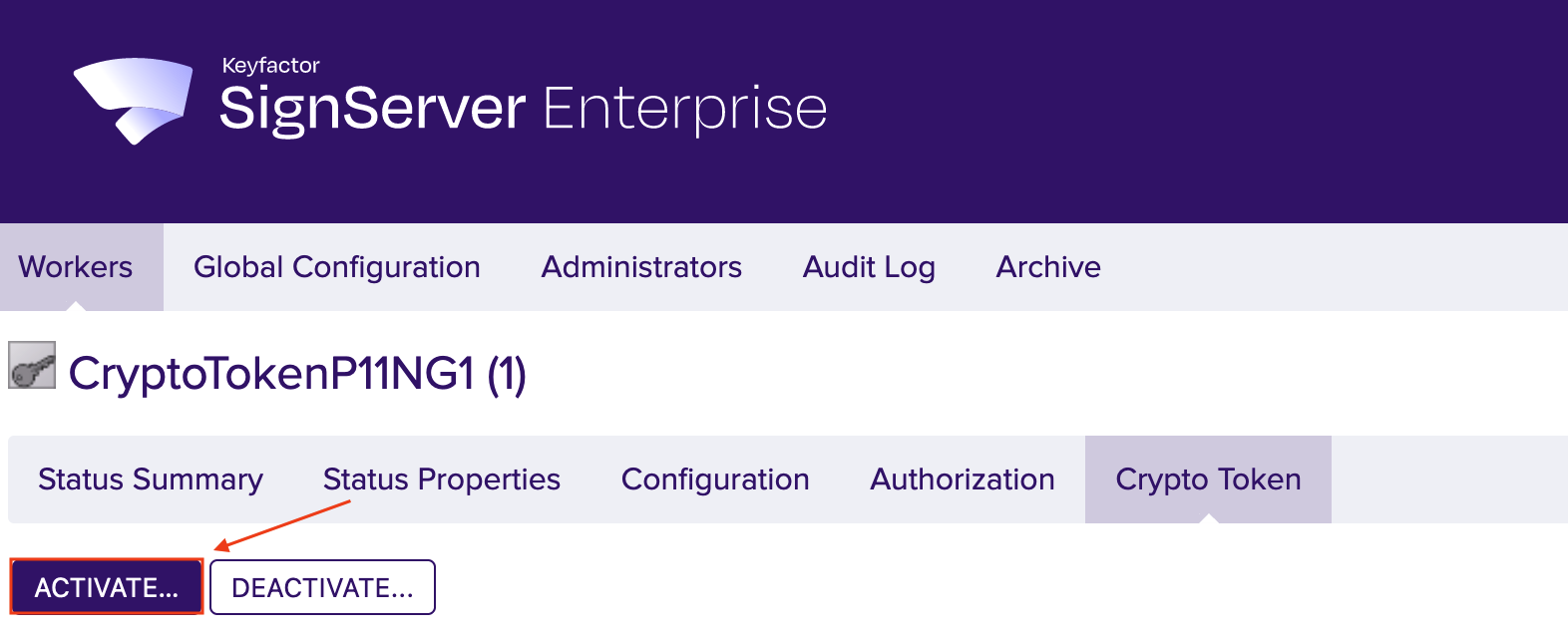Security: Configuring a Thales DPoD
You can configure a Hardware Security Module (HSM) to store and protect your cryptographic keys. Optionally, you can use the software-based SoftHSM implementation for demonstration or testing purposes.
We recommend uploading the Thales DPoD from a zip file using a driver.
Versions v10.2.0-111 and v10.4.0 have been thoroughly tested. If you choose to upload a zip. file that does not have its own driver, we use v10.2.0-111 by default.
The following describes how to configure a Thales DPoD for the Software Appliance by registering the Software Appliance and connecting it to the HSM.
Configuring an HSM for the Software Appliance is irrevocable. To change an HSM configuration, you must reset the Software Appliance.
To configure a Thales DPoD for your Software Appliance, follow the steps below.
Connect the Software Appliance with the Thales DPoD
To connect the Software Appliance with the HSM:
- Log in to your Software Appliance and open the Security page or click Configure HSM in the Overview.
In the HSM Configuration section, select Thales DPoD to access the Configuration fields.

- Upload your DPoD service client.zip file.
- Finalize with Save HSM Configuration.

A warning appears to inform you that after saving HSM configuration you can no longer switch to a different HSM.
To change the HSM configuration, you need to reset your SignServer Software Appliance. Proceed by clicking Activate.
Finalize with Activate.
After the DPoD file is successfully uploaded, there is an option to modify the already uploaded DPoD file. The checksum of the service client and the partition serial number of the uploaded DPod zip file are additionally displayed. Click Remove Service Client to upload a new zip file.
On the Security page of the application, the status of the HSM Driver will change from Not Connected to Connected as soon as the configuration is completed.
On the Overview page of the application, the status in the HSM Overview also changes to Connected as soon as the configuration is completed. During configuration, the appliance is in the Restarting status. During this time, it is not available.
Once the SignServer is running again, you can proceed with adding a Crypto Worker.
Add a Crypto Worker in SignServer
To create a Crypto Worker:
- In the Overview page of the Software Appliance, click Admin Web for SignServer.
- The SignServer page opens.
- Click Add... to continue.

- In the top menu, select Worker. You can choose the method you want to use to configure the Worker. In this example we will work with From Template.
Click From Template to continue.
- Open the drop-down menu under Load from Template. Here you can select the Worker to be configured. In this example we will work with p11ng-crypto.properties.
Click Next to continue.
The Configuration page opens.
WORKERGENID1.NAME=CryptoTokenP11NG1: this name can be customized (CryptoTokenP11NG1) as desired.
WORKERGENID1.SHAREDLIBRARYNAME=P11 Proxy should be configured as default.
# Method will specifying the slot to use. Here it is important to know if the HSM uses SLOT_NUMBER, SLOT_LABEL or SLOT_INDEX. Select the applicable one.
To deselect it, put # in front of it.
To enable it, remove # in front of it.
The # can be replaced for the slot to be used and specify the number of the HSM slot instead.
#WORKERGENID1.PIN=foo123 here the password can be enabled or disabled.
To deselect it, put # in front of it.
To enable it, remove # in front of it.
# Optional PKCS#11 attributes is used for key generation, you can select the attributes.
To deselect it, put # in front of it.
To enable it, remove # in front of it.
WORKERGENID1.DEFAULTKEY=testkey0 here you can add an existing key or use the default key.
Click Apply to save the settings. The token (CryptoTokenP11NG1) is automatically logged in when the PIN is set in the Crypto Worker configuration.
The token (CryptoTokenP11NG1) is automatically logged in when the PIN is set in the Crypto Worker configuration.- The Worker is not activated yet. Click on the created token and you will see the information about the token in the Status Summary.

- Click the Configuration tab to view the full configuration of the token.

- If the configuration meets your needs, click the Crypto Token tab. Edit them if necessary.

- Click Activate.

This step is optional!
The latest version of SignServer logs on automatically if the correct PIN is defined in the configuration as described in step 6.
In the field Authentication Code enter the optional password from Step 6. Here foo123.
Click Activate.
- If the default key exists and has been activated, the Crypto Worker is now ACTIVE.

For more information please see Worker Crypto Token Page.
HSM Troubleshooting
In the section HSM Driver Controls the current HSM Driver Status is displayed.
In case of HSM problems, the HSM driver can be restarted via the Restart button.
.png)